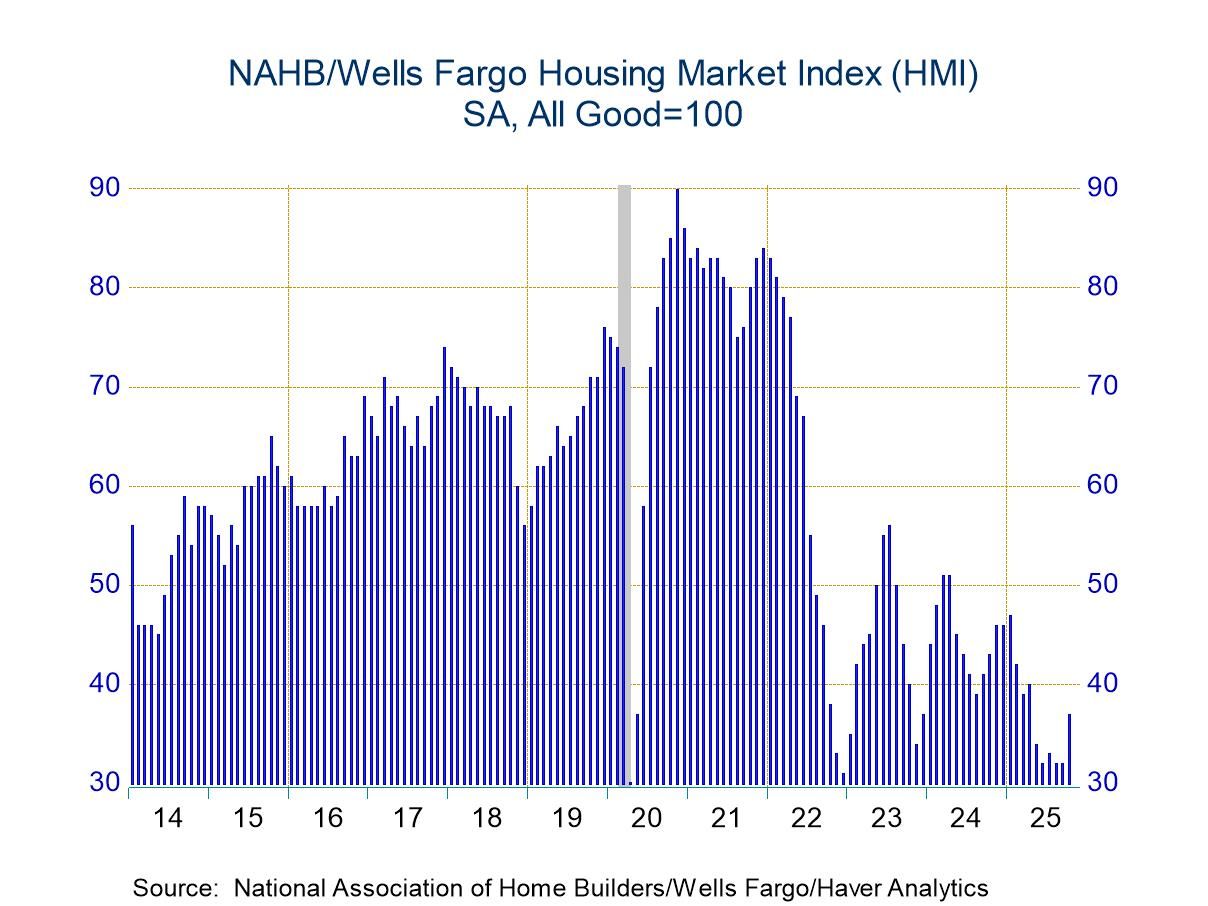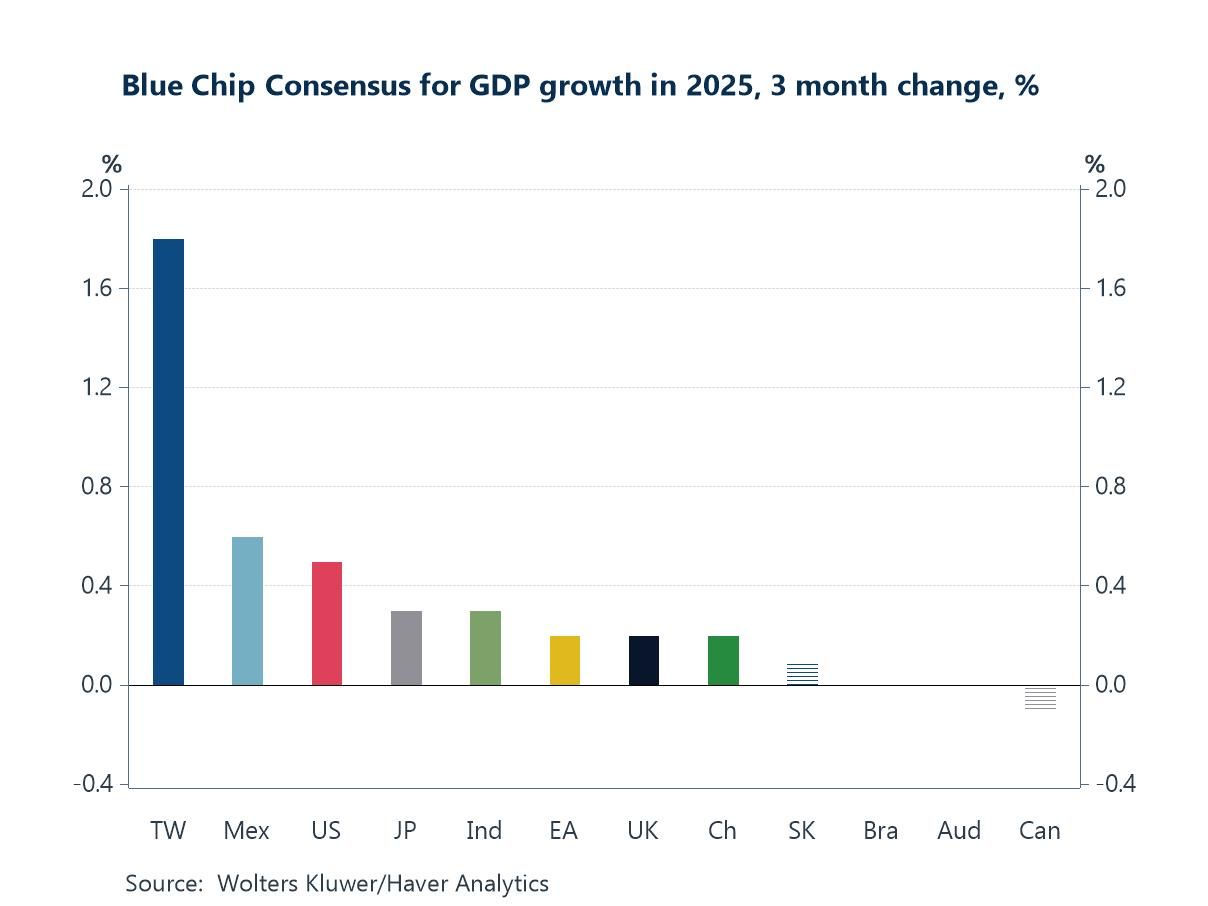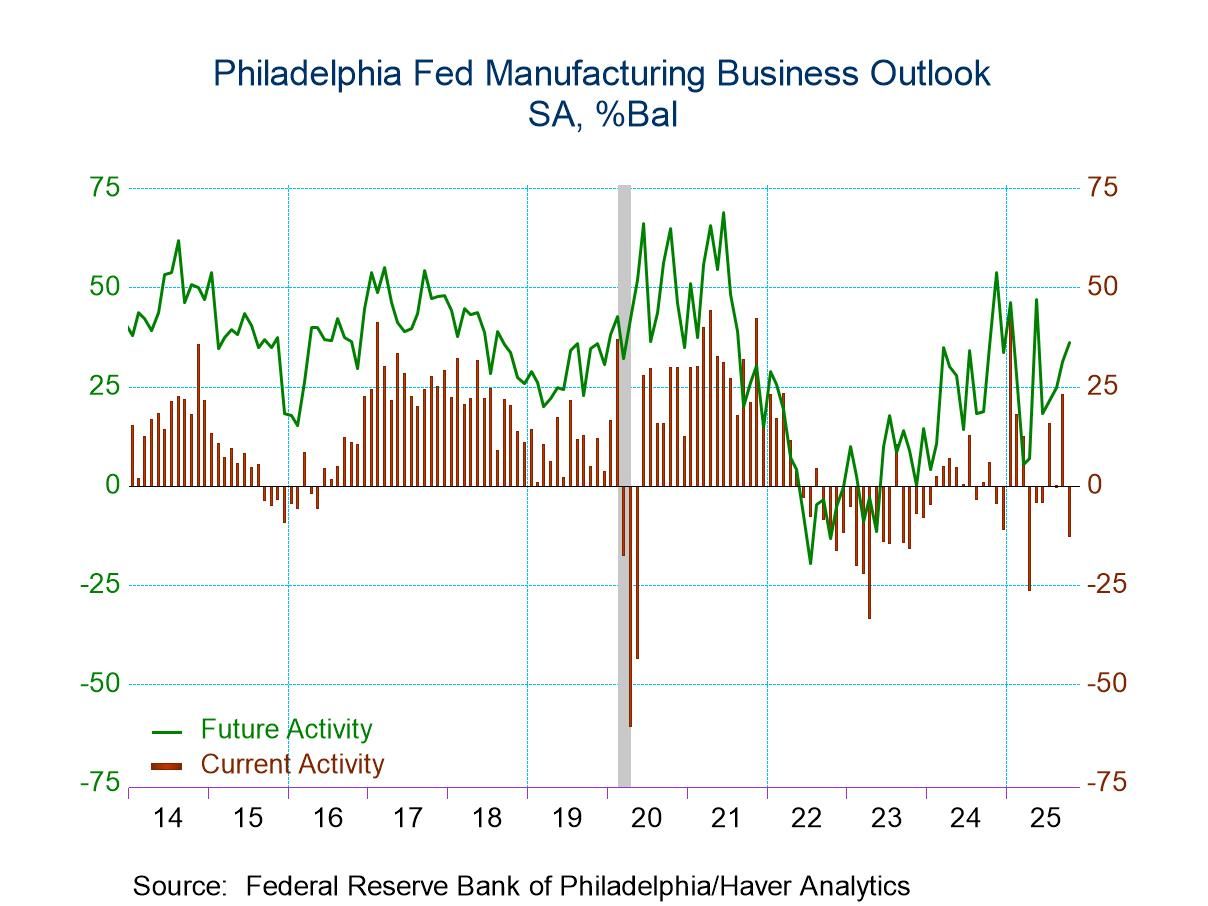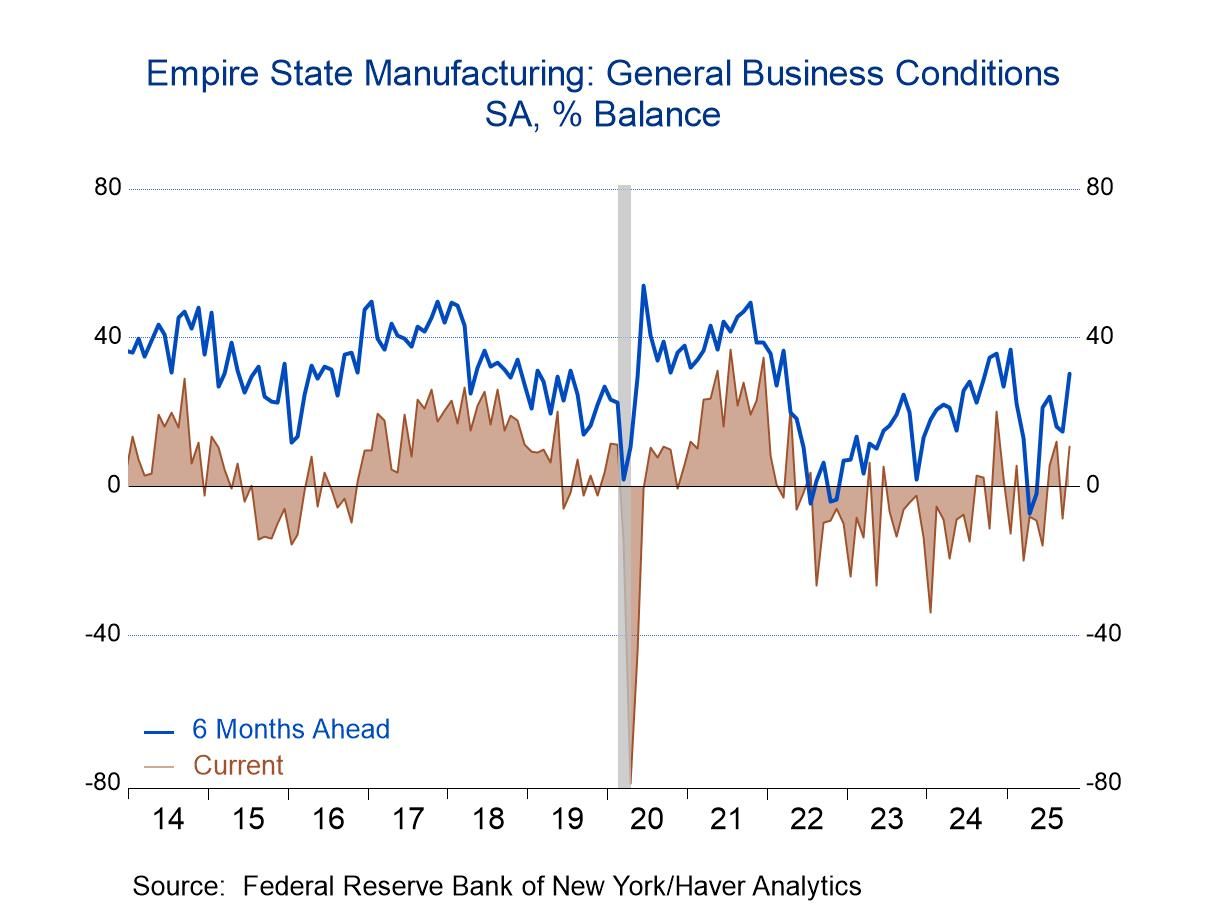 Global| May 06 2016
Global| May 06 2016Japan's PMI Indices Show Widespread Contraction in April
Summary
Japan's services sector crossed over to the dark side, showing a reading below 50 in April to join the manufacturing sector's already weak reading. The manufacturing gauge has a 48.2 reading, having been below 50 (showing contraction) [...]
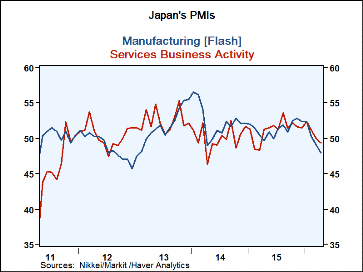 Japan's services sector crossed over to the dark side, showing a reading below 50 in April to join the manufacturing sector's already weak reading. The manufacturing gauge has a 48.2 reading, having been below 50 (showing contraction) for two months running. The services sector just fell below the so-called boom-bust line in rounded terms, but unrounded it was technically below it in March as well. Prior to those instances, the services sector was last below 50 in March 2015.
Japan's services sector crossed over to the dark side, showing a reading below 50 in April to join the manufacturing sector's already weak reading. The manufacturing gauge has a 48.2 reading, having been below 50 (showing contraction) for two months running. The services sector just fell below the so-called boom-bust line in rounded terms, but unrounded it was technically below it in March as well. Prior to those instances, the services sector was last below 50 in March 2015.
Weak composite
That means that the composite index is also below 50 and it show contraction for two months running. It was last below 50 in March 2015 and stood below 50 for two months in a row at that time having a brief stint with contraction after a mini boom cycle. This time it's different.
Weakness has been lingering
The weakness is not unexpected. While the nearly all the Japanese indicators all are less up-to-date than the PMI data, Japan's economy watchers index, a service sector proxy, has been weak for some time. Its future index is below 50 for April, having been below 50 for three consecutive months. Japan's industry-specific sector surveys are up to date only through February, but the tertiary (services) index has been listless for many months. And Japan's leading economic index has been slipping.
Policy already has disappointed
It is because of ongoing economic weakness that markets were so shocked and took it so badly when the Bank of Japan last met and did not launch any new stimulative initiatives.
There is a context of global weakness
Globally, growth is weak. The global PMI measures show an undeniable tilt to weakness. Of 12 countries or areas (EMU) reporting a composite PMI index in April, only Japan, Hong Kong, Singapore, and Brazil posted readings below 50. If we rank the composite PMIs for each country across all values since January 2011, Japan, Hong Kong, the UAE, Brazil, and the U.K. log standings that are in the lower 20% of their historic queues of data or lower. Russia and India are below their respective 50th percentile marks, which for the percentile standings represents the median. The strongest standing globally is for the EMU region which has only a 60th percentile standing over this period of time (higher only about 40% of the time). The U.S. composite index stands in the lower 42 percentile of its historic queue of data on this timeline. This is not very solid stuff.
Recurring theme of weakness
There is a repeating theme here. There is economic weakness. There is further slippage. The slippage remains minor, but it is persistent. There is no global center of strength. The U.S. may once have provided that, but it would be a stretch to say it still can or is doing that. Monetary policy is all but tapped out. Fiscal policy is mostly mothballed. Monetary authorities put a brave a face on their efforts and on their capabilities, but the tools they have left are their least effective. In fact, negative rates, already in use a number of places, are creating a certain backlash.
U.S. late cycle characteristics
The U.S. is exhibiting some late cycle properties. While recoveries do not die of old age, this one is long enough in the tooth to cause us to be watchful. Because the global recession/financial crisis knocked economies for a loop and off their past expansion paths, everyone is in a new lower-trajectory growth environment until new normalcies are established. As a result, no country seems to feel that it is growing fast enough by its own past standards; yet, each is doing the best it can do. This process of reconfiguring an economy takes time. The U.S. is already showing what could be a cycle low for jobless claims, a well-known later cycle warning. The U.S. unemployment rate has at least paused from its ongoing declining profile. A rising unemployment rate would be a bad sign. Export and import growth rates have flattened to near zero, another late cycle signal of warning. More directly, the manufacturing PMI gauge has already dipped below 50 for a period of time.
From disappointment to disaster?
There is no certainty there, but there are risks and clear signals not to take anything for granted. The U.K. PMI readings are dropping sharply. Japan remains stuck, while China in its own way is disappointing. India is weak. Brazil and Venezuela, to name just two more, are having some serious problem. Germany's performance dresses up performance in the EMU, but many economies in the EMU are also still struggling. Do not dismiss the notion that the global economy could slide into recession with interest rates and inflation already this low. It could happen.

Robert Brusca
AuthorMore in Author Profile »Robert A. Brusca is Chief Economist of Fact and Opinion Economics, a consulting firm he founded in Manhattan. He has been an economist on Wall Street for over 25 years. He has visited central banking and large institutional clients in over 30 countries in his career as an economist. Mr. Brusca was a Divisional Research Chief at the Federal Reserve Bank of NY (Chief of the International Financial markets Division), a Fed Watcher at Irving Trust and Chief Economist at Nikko Securities International. He is widely quoted and appears in various media. Mr. Brusca holds an MA and Ph.D. in economics from Michigan State University and a BA in Economics from the University of Michigan. His research pursues his strong interests in non aligned policy economics as well as international economics. FAO Economics’ research targets investors to assist them in making better investment decisions in stocks, bonds and in a variety of international assets. The company does not manage money and has no conflicts in giving economic advice.



